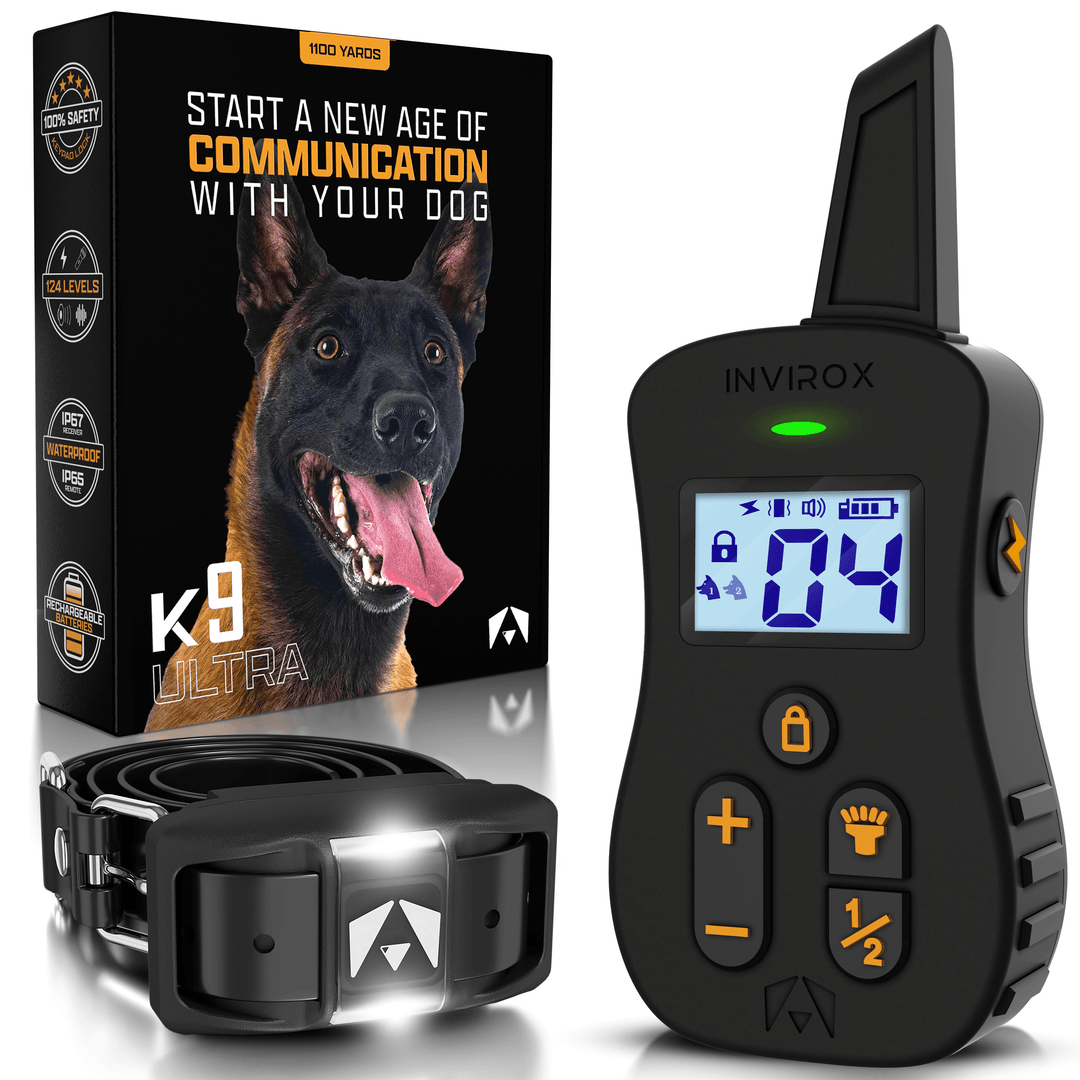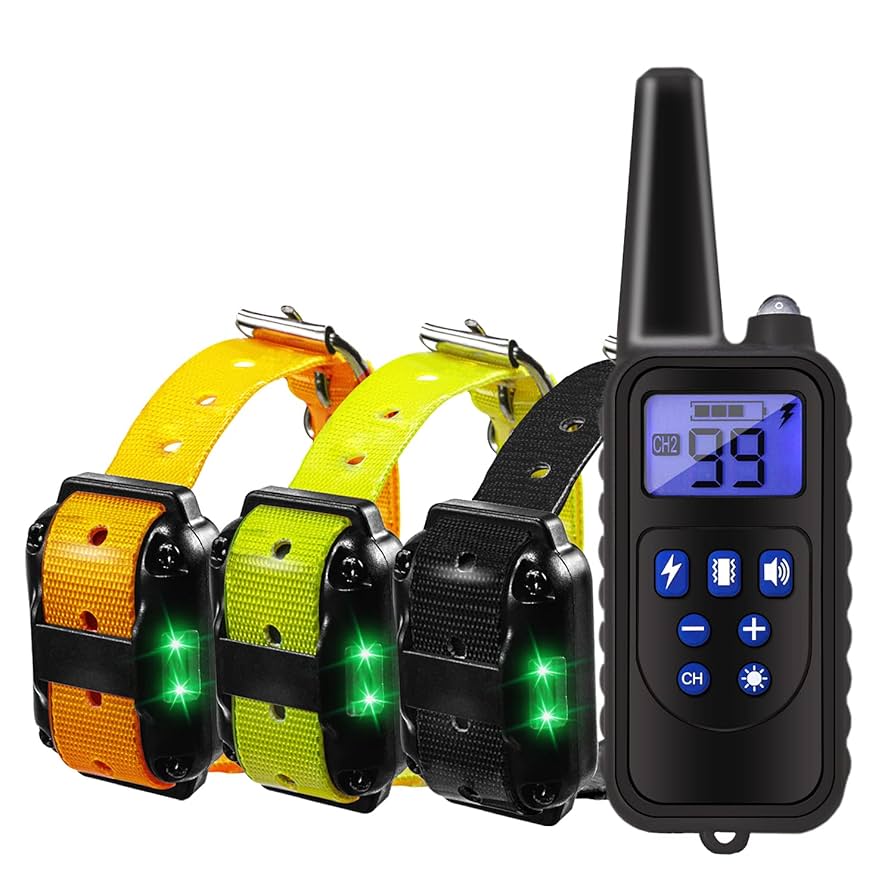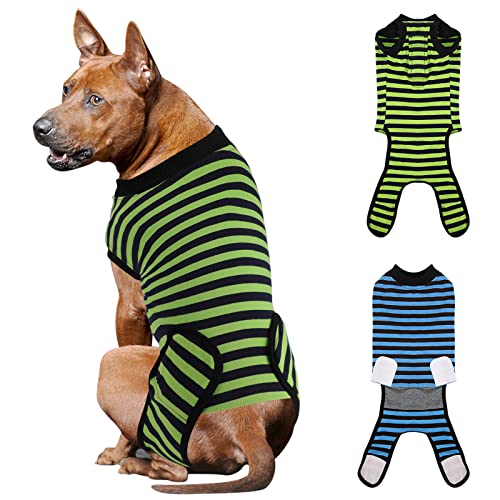Are you struggling to train your dog and wondering if a shock collar could help? Choosing the right training tool can feel overwhelming, especially when your furry friend doesn’t listen.
Shock collars for dog training have sparked plenty of debates, but understanding how they work and when to use them can make a big difference. You’ll discover what shock collars really do, their benefits and risks, and how to use them safely.
By the end, you’ll be better equipped to decide if this training method fits your dog’s needs—and your peace of mind. Keep reading to find out more!
Understanding Shock Collars
Understanding shock collars is essential if you’re considering them for training your dog. These devices have sparked debate, but knowing how they work and their purpose can help you make an informed choice. Let’s break down their functionality and the types available so you can decide if they fit your training approach.
Purpose And Functionality
Shock collars are designed to get your dog’s attention through a mild electric stimulus. The goal isn’t to hurt but to interrupt unwanted behavior quickly. Think of it as a quick reminder that certain actions have consequences.
Most collars work by delivering a short, controlled shock when your dog barks excessively, pulls on the leash, or ignores commands. You control the intensity, which means you can start low and adjust based on your dog’s response.
Have you ever noticed how your dog tunes out commands when overly excited? A shock collar can sometimes help regain their focus by creating a clear signal that their behavior needs correction.
Types Of Shock Collars
- Static Shock Collars:These provide a consistent electric pulse when activated. They are the most common and simple type.
- Vibration Shock Collars:Instead of a shock, these use vibrations as a gentler form of correction. They can be effective for dogs sensitive to electric stimulation.
- Bark Control Collars:Specifically designed to reduce excessive barking by delivering a stimulus only when the dog barks.
- Remote Training Collars:Operated by a remote control, these allow you to correct your dog from a distance, useful for off-leash training.
Each type has its pros and cons. For example, remote collars give you control but require careful timing to avoid confusing your dog. Vibration collars might be better for sensitive pups but may not work on stubborn behaviors.
Pros And Cons
Choosing whether to use a shock collar for dog training involves weighing the advantages against the potential drawbacks. Understanding both sides helps you make an informed decision that respects your dog’s well-being and meets your training goals.
Benefits Of Using Shock Collars
Shock collars can deliver quick and clear feedback to your dog, which some owners find helpful for correcting unwanted behaviors. They are often effective in stopping excessive barking or preventing dogs from running into dangerous areas.
Many users report faster training progress compared to traditional methods alone. For instance, when my neighbor used a shock collar under guidance, her dog stopped jumping on guests within days.
These collars also allow remote control, giving you the option to train from a distance. This is useful for off-leash training where verbal commands might not work well.
- Immediate response to commands
- Improved safety by discouraging dangerous actions
- Adjustable intensity levels for different dogs
Potential Risks And Concerns
Shock collars carry the risk of causing fear or anxiety if used improperly. Some dogs may associate the shock with their owner rather than the behavior, which can harm your relationship.
There is also the chance of physical discomfort or injury if the collar is set too high or worn too long. Several veterinarians caution against relying solely on shock collars for training.
Could using a shock collar damage your dog’s trust? This question is worth considering before starting with this tool. Always ensure you understand how to use it correctly and watch your dog’s reactions closely.
- Possible emotional stress for the dog
- Risk of misuse leading to harm
- Not suitable for all dogs or situations
Safety Precautions
Using shock collars for dog training requires careful safety measures. Safety protects your dog and ensures training is effective. Without proper care, these tools can cause harm or stress.
Always follow strict precautions to keep your dog safe and comfortable. Proper use builds trust and helps training progress smoothly.
Proper Fit And Adjustment
The collar must fit snugly but not too tight. A loose collar may not deliver correct signals. A tight collar can hurt or irritate your dog’s skin.
Check the collar fit daily. Adjust it to prevent discomfort or rubbing. The contact points should touch the skin but not press hard.
Use the lowest shock setting that works for your dog. High levels can cause pain and fear. Start with gentle settings and increase only if needed.
Monitoring Your Dog’s Reaction
Watch your dog closely during training sessions. Look for signs of stress or fear, such as whining, trembling, or avoiding you.
Stop using the collar immediately if your dog shows discomfort. Consult a professional trainer or vet for advice.
Keep training sessions short to avoid overwhelming your dog. Positive reinforcement alongside the collar improves learning and reduces stress.

Credit: www.invirox.com
Training Techniques
Training dogs with shock collars requires care and the right techniques. Choosing the proper method ensures the dog learns without fear or stress. Effective training builds trust and helps dogs respond well to commands. Below are two important training techniques to consider.
Positive Reinforcement
Positive reinforcement rewards good behavior. Use treats, praise, or play as rewards. When the dog responds correctly, give a reward immediately. This helps the dog link the action with something pleasant.
Shock collars should only be a warning, never a punishment. Combine collar use with rewards to guide the dog gently. This method encourages dogs to learn faster and enjoy training sessions.
Gradual Introduction
Introduce the shock collar slowly and carefully. Let the dog wear the collar without turning it on at first. This helps the dog get used to the feeling.
Start with the lowest shock setting to avoid frightening the dog. Test the collar’s signal before using it during training. Gradually increase the intensity only if needed and always watch the dog’s reaction.
Patience is key. Short, calm training sessions help the dog adjust well. Always stop if the dog shows signs of stress or fear.
Common Mistakes
Using shock collars for dog training can be effective, but many owners fall into common traps that reduce their success and may harm their dog’s well-being. Recognizing these mistakes helps you use the tool responsibly and maintain a strong bond with your pet. Let’s look at two frequent errors that can derail your training efforts.
Overuse And Dependence
Relying too much on a shock collar can make your dog fearful rather than obedient. Some owners keep the collar on all day or use it repeatedly without breaks, which can cause stress and confusion.
Think about it: if your dog starts to associate the collar with constant discomfort, will they really learn what you want, or just try to avoid pain? Instead, use the collar sparingly and always combine it with positive reinforcement like treats and praise.
Have you noticed your dog’s behavior worsening after extended collar use? That’s a sign to step back and reassess your approach.
Ignoring Emotional Signals
Dogs communicate through body language and vocalizations, but many owners miss these emotional signals when using a shock collar. Signs like trembling, tail tucking, or whining indicate your dog is scared or stressed, not just disobedient.
Ignoring these signals can make training harmful, damaging your dog’s trust and causing long-term anxiety. Always watch for signs of distress and stop using the collar if your dog shows fear or confusion.
Ask yourself: are you listening to your dog’s feelings, or just focusing on obedience? Respecting their emotions is key to effective, humane training.
Alternatives To Shock Collars
Shock collars often raise concerns due to their use of pain or discomfort to modify behavior. Many dog owners look for gentler options that still provide effective training results. Alternatives to shock collars offer ways to communicate with your dog without causing stress or fear.
Vibration Collars
Vibration collars use gentle vibrations to get your dog’s attention instead of electric shocks. This method is less stressful and can be very effective for dogs that respond well to touch cues. You can adjust the intensity to suit your dog’s sensitivity, making it a customizable option.
From personal experience, I found that my dog quickly learned to associate the vibration with a command, which made training smoother. It’s a great choice if you want to avoid any negative feelings during training. Have you considered how your dog reacts to physical signals like vibrations?
Voice Command Training
Training your dog using voice commands is one of the most natural and positive methods. It builds trust and encourages your dog to listen because of the bond you share, not fear. Consistency and clear commands are key to success here.
Try pairing your commands with treats or praise initially. This helps your dog understand what you want and motivates them to follow instructions. Would your dog respond better to your voice than to any device?
Expert Opinions
Expert opinions offer valuable insight into shock collars for dog training. They help dog owners understand the risks and benefits. Experts share their views based on experience and research. This guidance aids in making informed decisions for pet care.
Professional Trainers’ Insights
Many professional trainers express mixed feelings about shock collars. Some say these tools can correct dangerous behaviors quickly. Others warn they may cause fear or anxiety in dogs.
Trainers often suggest using shock collars only as a last option. Positive reinforcement methods are preferred for long-term success. Proper timing and low intensity are crucial if a shock collar is used. Trainers stress the importance of understanding a dog’s personality before starting.
Veterinary Advice
Veterinarians focus on the health and well-being of dogs. They often caution against the use of shock collars. Stress and pain from shocks can harm a dog’s mental health.
Vets recommend safer training tools and techniques. They encourage owners to seek professional help for behavior problems. Regular check-ups help monitor a dog’s response to any training method. Veterinary advice emphasizes kindness and patience in training.

Credit: www.amazon.com
Choosing The Right Collar
Choosing the right shock collar for your dog is more than just picking the first one you see. The collar should match your dog’s size, temperament, and training needs. A well-chosen collar makes training smoother and safer for both you and your pet.
Features To Consider
Look for adjustable intensity levels. This lets you start with the lowest stimulation and increase only if necessary, avoiding discomfort for your dog.
Check if the collar offers multiple stimulation modes, such as beep, vibration, and shock. Sometimes a beep or vibration alone can get your dog’s attention without needing a shock.
Battery life matters. A collar with a long-lasting, rechargeable battery saves you frequent charges during training sessions.
Water resistance is crucial if your dog loves outdoor adventures or swimming. A collar that can handle wet conditions will last longer and work reliably.
Consider the collar’s size and weight. It should fit snugly but comfortably around your dog’s neck without causing irritation.
Brand Comparisons
| Brand | Key Features | Best For | Price Range |
|---|---|---|---|
| Brand A | Multiple stimulation modes, waterproof, long battery life | Medium to large active dogs | $$$ |
| Brand B | Lightweight, adjustable intensity, beep and vibration only | Small dogs and sensitive breeds | $$ |
| Brand C | Durable design, remote range up to 1000 yards, rechargeable | Outdoor training and hunting dogs | $$$ |
| Brand D | Basic shock mode, affordable, easy to use | First-time users on a budget | $ |
Have you thought about what your dog responds to best? Some dogs react well to vibrations, while others need a stronger stimulus. Matching the collar’s features to your dog’s personality makes a big difference.

Credit: www.amazon.com
Frequently Asked Questions
What Are Shock Collars Used For In Dog Training?
Shock collars deliver mild electric stimulation to correct unwanted behaviors. They help reinforce commands and discourage actions like barking or aggression. Proper use ensures effective training without harm or fear, promoting better obedience and communication between owner and dog.
Are Shock Collars Safe For Dogs?
When used correctly, shock collars are generally safe. It’s important to follow manufacturer guidelines and avoid excessive intensity. Misuse can cause stress or injury. Consulting a professional trainer before use ensures your dog’s safety and well-being during training sessions.
How Do Shock Collars Improve Dog Behavior?
Shock collars provide immediate feedback to dogs when they misbehave. This helps dogs associate negative stimuli with unwanted actions. Consistent training with a collar encourages faster learning and better control, reducing behavioral problems like excessive barking or disobedience.
Can Shock Collars Cause Harm To Dogs?
Improper use of shock collars can cause physical and emotional harm. Overuse or high intensity may lead to anxiety, fear, or injury. Responsible use, low settings, and positive reinforcement minimize risks and promote humane training methods.
Conclusion
Shock collars can help with dog training but require careful use. Always follow instructions and use the lowest setting needed. Pay close attention to your dog’s reactions and comfort. Combine collars with positive rewards for best results. Remember, training takes time and patience.
Choose methods that suit your dog’s personality and needs. Safety and kindness matter most in every training step.






